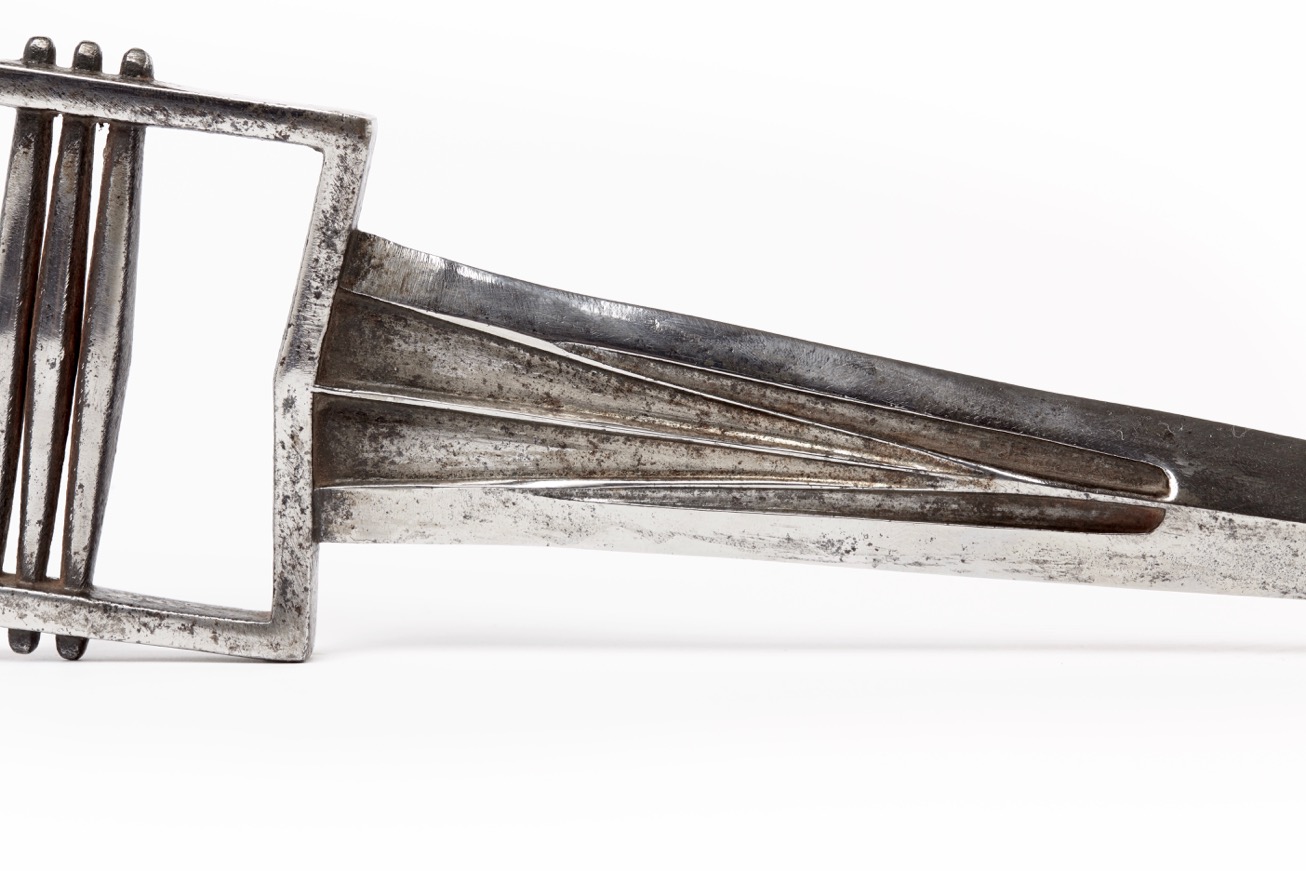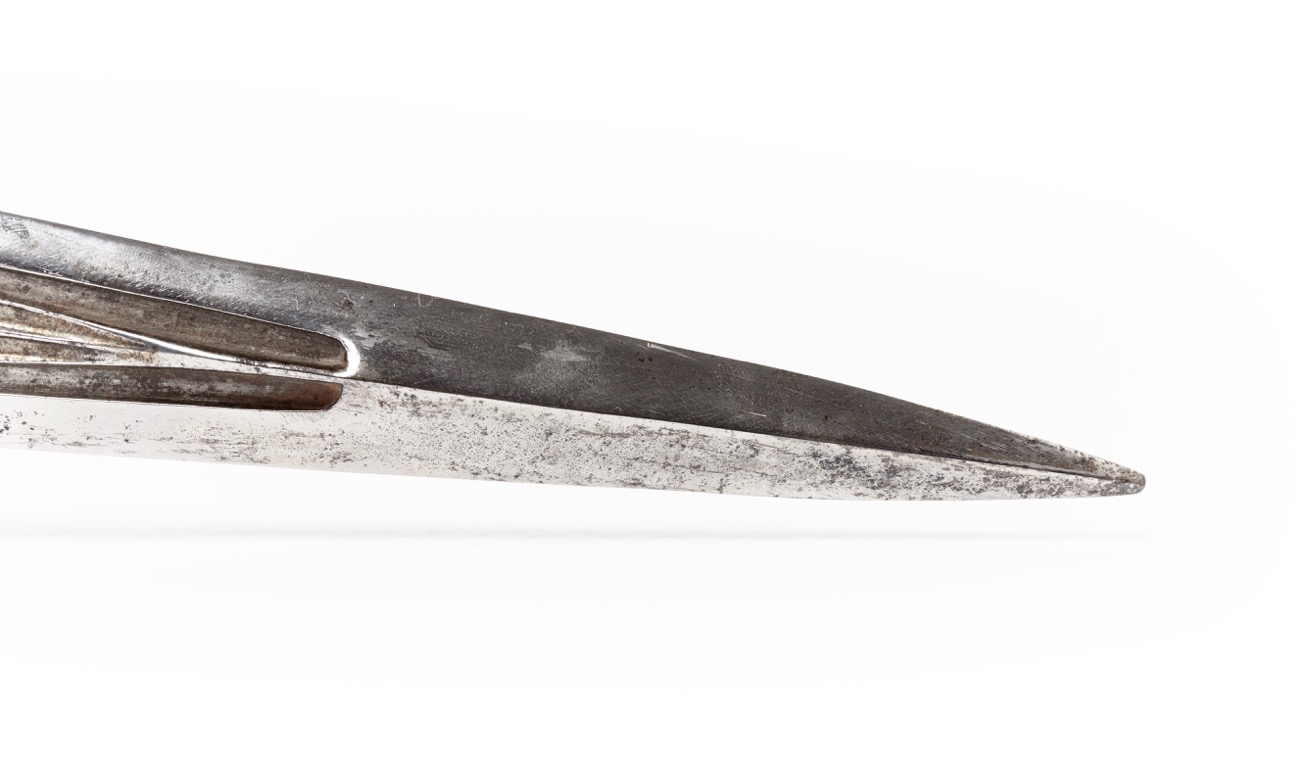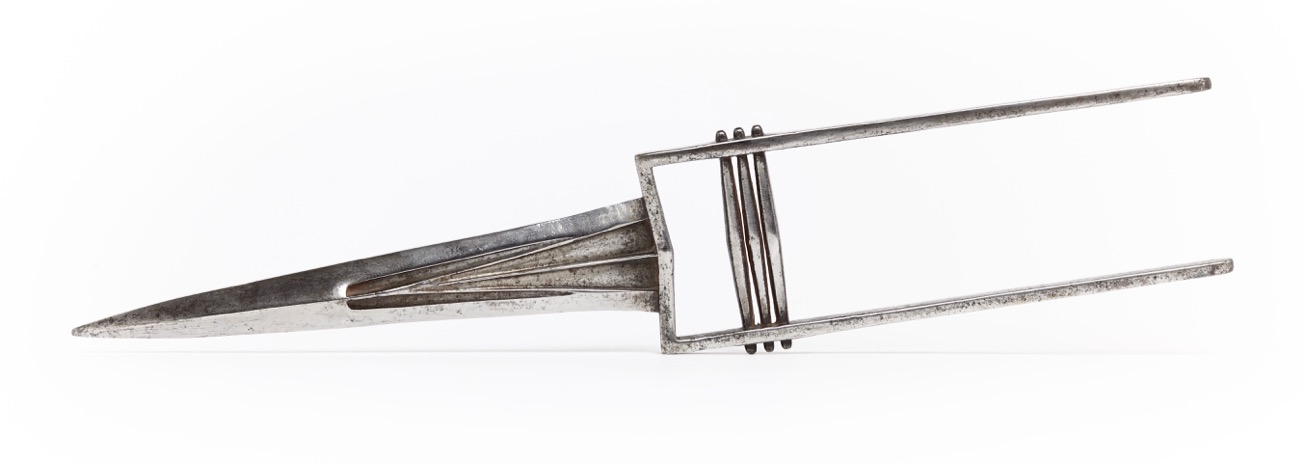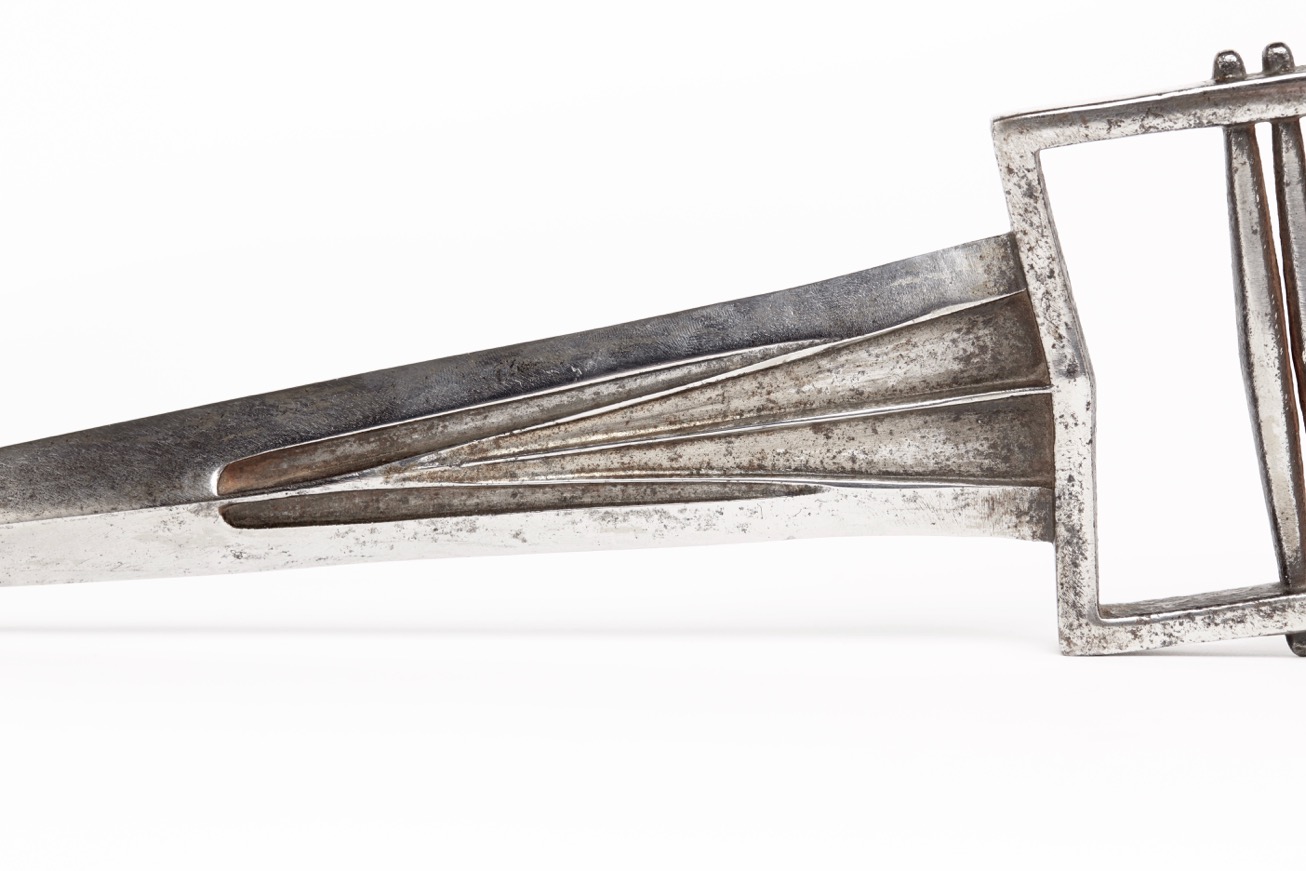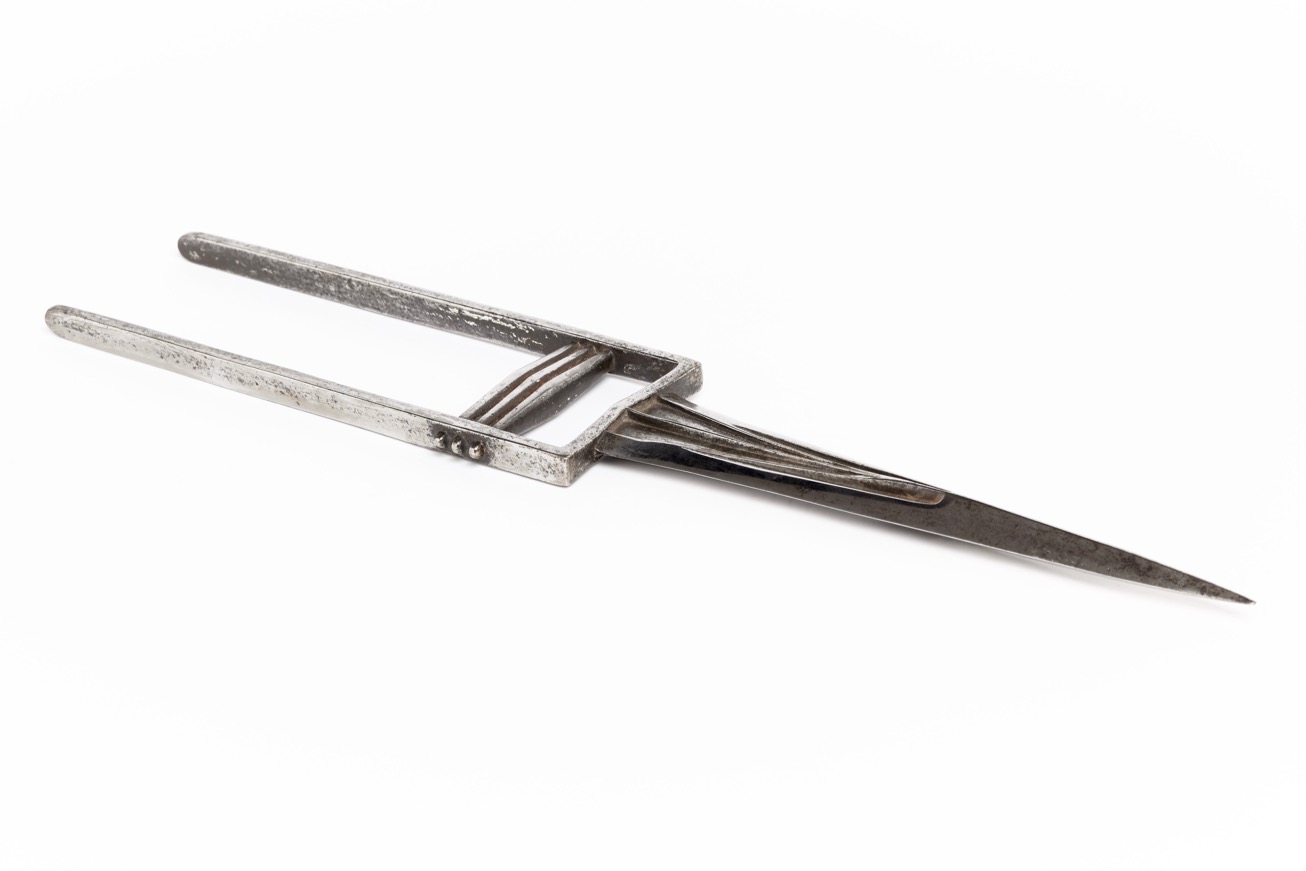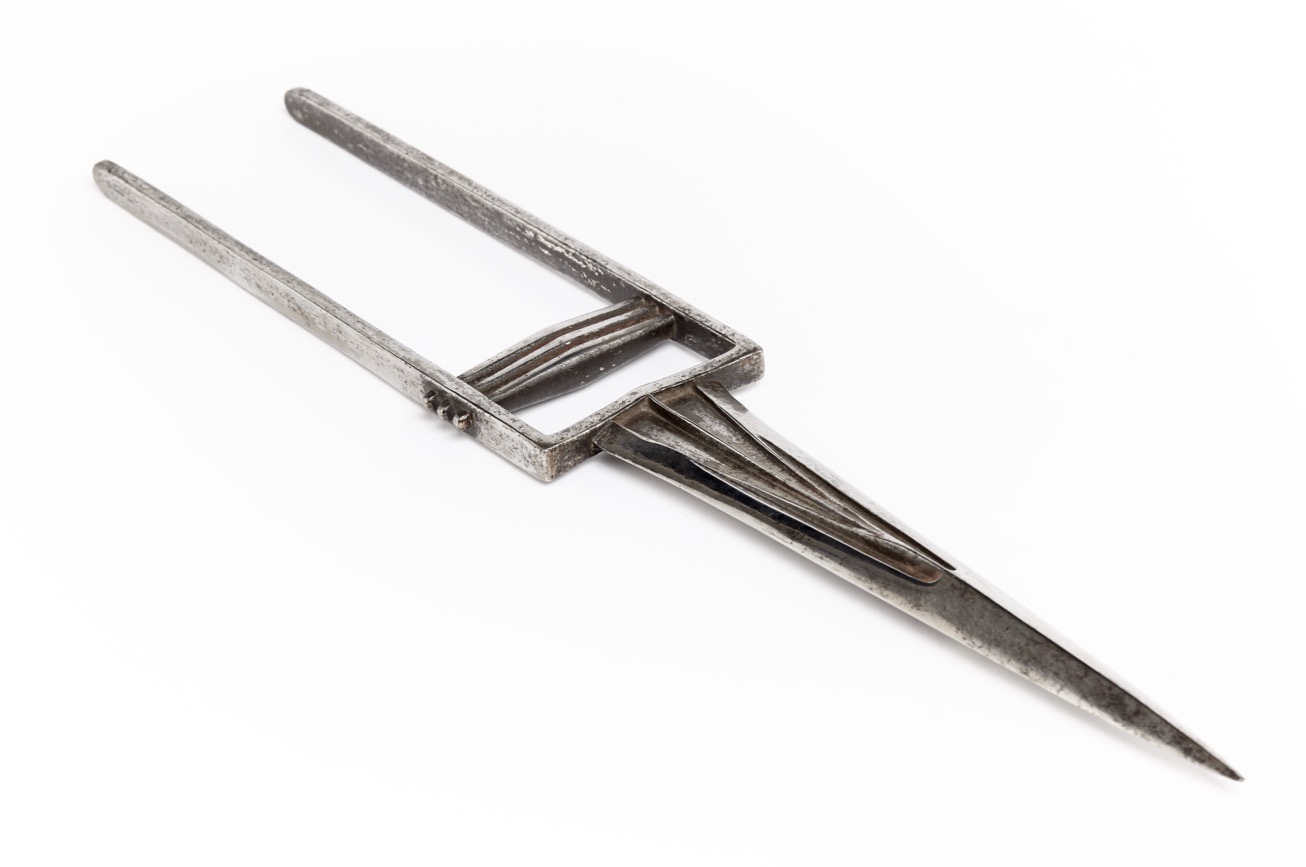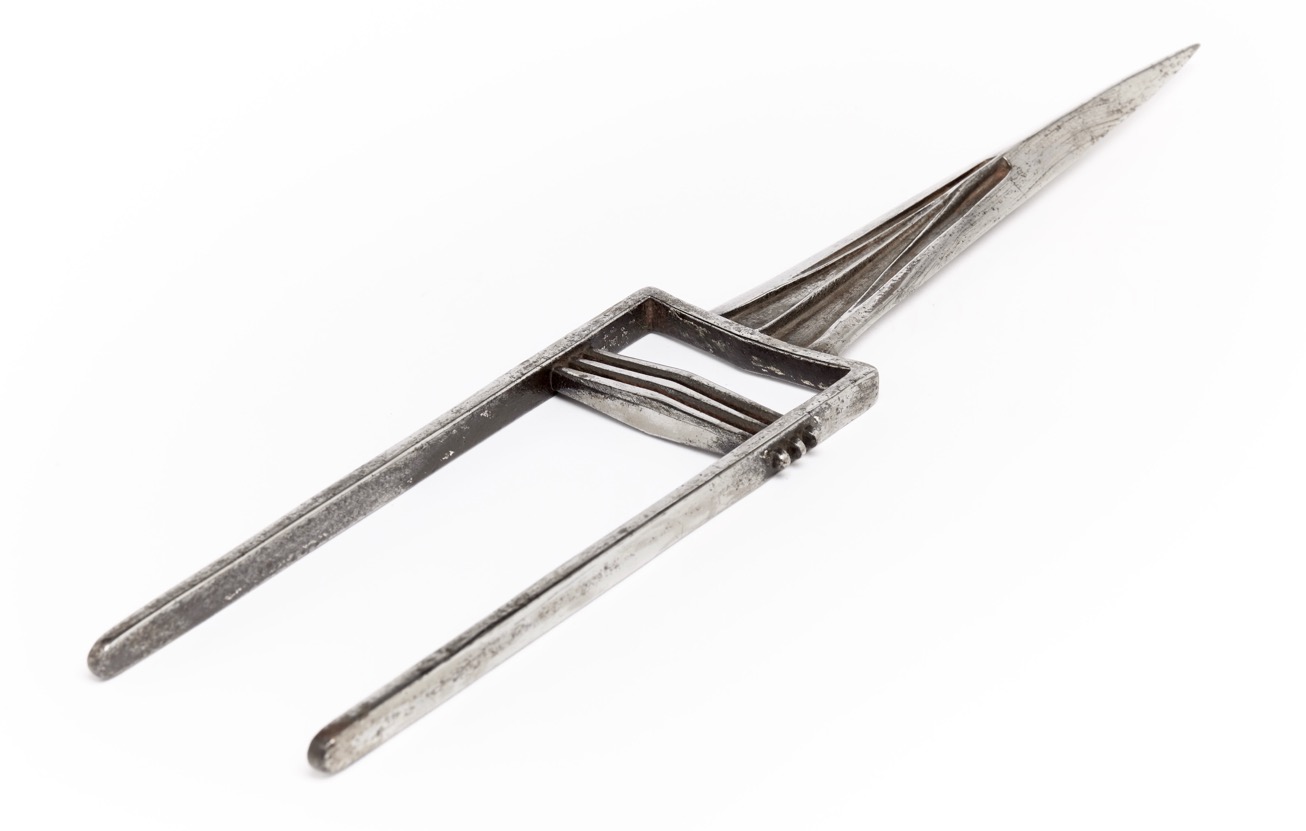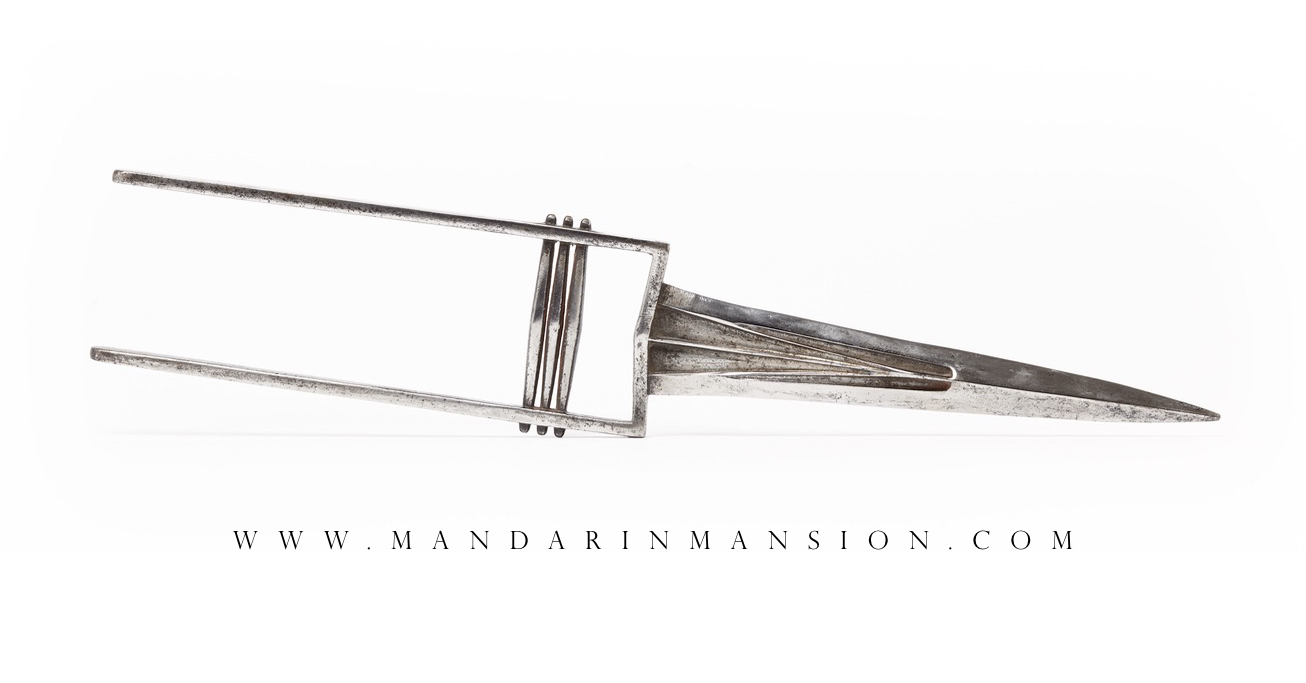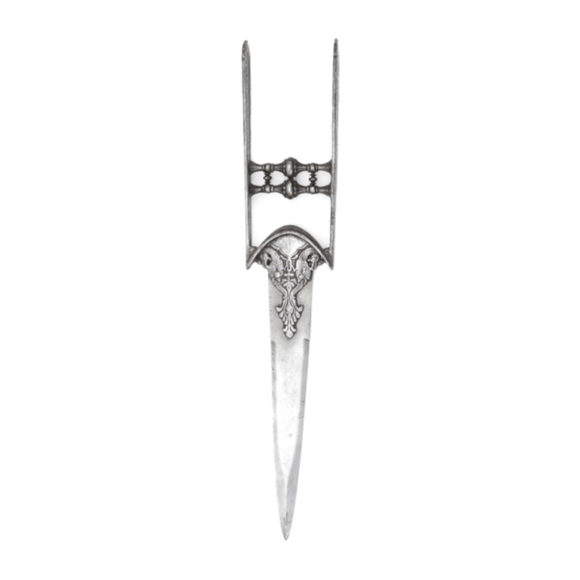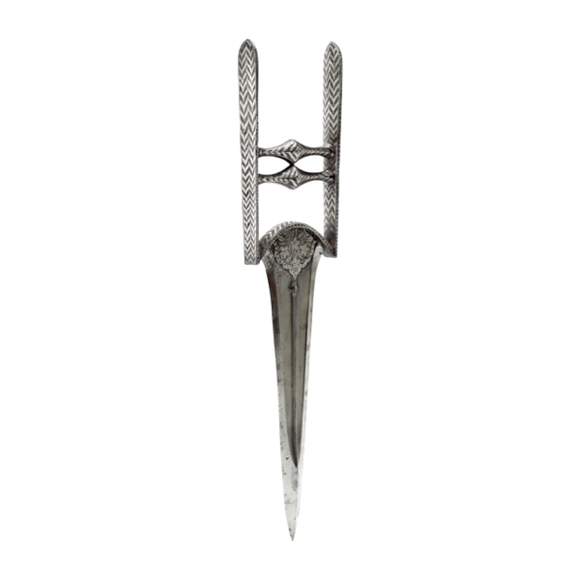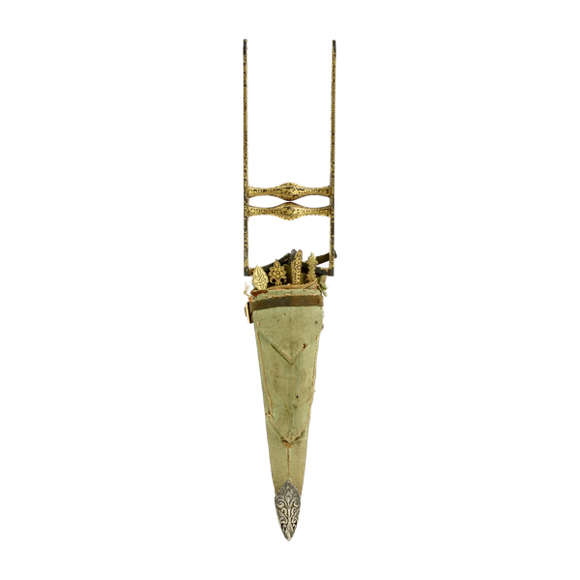Of a style often associated with Tanjore, the seat of the Vijayanagara empire.

48.7 cm / 19.2 inch
24.5 cm / 9.6 inch
forte 9.5 mm
middle 15 mm
near tip 12.5 mm
forte 48 mm
middle 29 mm
near tip 18 mm
16.5 mm thick by 26 mm wide.
724 grams
North India, possibly Ulwar and Bundelkhand.
Iron, steel, silver.
18th century
Description
A heavy Indian katar with substantial armor piercing blade. The blade has an acute point and a thick bulge near the tip where it reaches a thickness of almost twice the forte.

The blade has deep grooves, more like sunken panels, with high ridges separating them. Such grooves are often erroneously called "blood grooves" but are usually purely meant to lighten a blade while keeping it rigid. Sometimes the grooves and sunken panels are so shallow that they are almost purely ornamental.
The grooves on this katar, however are deep enough to lighten the structure while maintaining rigidity and even to act as actual channels to drain blood out of a wound so the weapon doesn't function as a "stop" if not extracted. It's a guess, but perhaps these heavy armor piercers are made this way because they are more likely to get stuck in a steel plate.
The handle consists of three bars, their ends protruding from the sides of the two long, thick steel sidebars with remains of old silver damascening. It is a very simple but well-executed piece, relying purely on its geometry and not on decoration for its aesthetic appeal. The weapon is currently in an old mirror finish.
Comparable examples & attribution
This katar is part of a group of north Indian katar with some shared features:
1. A handle with multiple slender bars, whose ends protrude on the outside of the sidebars.
2. Side bars are comparatively narrow but thick, with rounded ends.
3. Blades are often quite narrow but very thick with:
a.) Deep sunken panels.
b.) An exaggerated thickening at the tip, sometimes reaching a thickness approaching the blade width.
A number of these are published in Nordlunde, Jens: A Passion for Indian Arms; a Private Collection. For similar handles and characteristic narrow blades, see catalog numbers 55, 65, 134, 157.1 For similar handles, see catalog numbers 112 (dated 1803-1804), 46. Number 112 bears an inscription attributing it to Bakthwar Singh, the second ruler of Ulwar.
Another hint to their attribution can be found in Arms and armour at Sandringham. Two examples with identical handles but with three blades each are said to have been presented by "the Jagirdar of Alipura, Bundelkhand".2
A geometrically identical example can be found in Indian art in Marlborough House. According to its description, this example is gilded. No geographical attribution is given.3
An example with curved blade can be found in the Royal Armories in Leeds, accession number: XXVID.97 It is said to be from Gwalior, a town with a strategic fortress at the edge of Bundelkhand. It's 250 km southeast of Ulwar and about the same distance northwest of Alipura. The Rajput states of Ulwar and Bundelkhand shared a stretch of border in central North India, with the Mahratta states to the south.
And finally, Hendley illustrates one such katar in the armory of H.H. the Nawab of Tonk.4
Tonk lies in the West of Rajasthan.
Let's plot that out on a map:

Conclusion
An impressive katar with narrow but thick armor piercing blade with deeply sunken panels. Completely undecorated, its aesthetic appeal lies in its simplistic but well-executed geometry. It is part of a group of such weapons with a very distinct style that may be attributed to the region of Ulwar and Bundelkhand, central north India.
NOTES
1. Nordlunde, Jens: A Passion for Indian Arms; a Private Collection. 2016, Denmark. Self-published.
2. Indian art in Marlborough House. A catalogue of the Collection of Indian Arms and Objects of Art presented by the Princes and Nobles of India. Illustrated and printed by W. Griggs. Photo and Chromo-Lithographer to Her Majesty the Queen. Reprint. Ken Trotman, 2008.
3. Arms and armour at Sandringham. The Indian Collection presented by the Princes, Chiefs and Nobles of India in 1875-1786; also weapons and war relics from other cultures. London: W. Griggs & Sons, Ltd, Hanover Street, Peckham, 1910. Catalog numbers 20 and 21.
4. Thomas Holbein Hendley; Memorials of the Jeypore exhibition. Volume II. 1883. Plate XXXVI.
